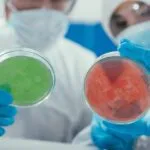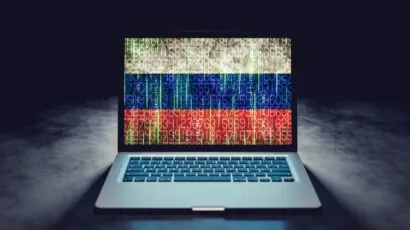The myths (and realities) of synthetic bioweapons
By Filippa Lentzos, Catherine Jefferson, Claire Marris | September 18, 2014

The dominant narrative permeating scientific and policy discussions on the security threat posed by synthetic biology can be summarized in five ways:
- Synthetic biology is making it easier for non-experts to manipulate dangerous pathogens and, therefore, making it easier for terrorists to concoct bioweapons.
- Synthetic biology has led to the growth of a do-it-yourself biology community that could offer dual-use knowledge and equipment to bioterrorists seeking to do harm.
- DNA synthesis has become cheaper and can be out-sourced, making it easier for terrorists to obtain the basic materials to create biological threat agents.
- Non-experts could use synthetic biology to design radically new pathogens.
- Terrorists want to pursue biological weapons for high-consequence, mass- casualty attacks.
This narrative rests on misleading assumptions about both synthetic biology and bioterrorism, and these five myths are challenged by more realistic understandings of the scientific research currently being conducted in both professional and do-it-yourself laboratories, and by an analysis of historical cases of bioterrorism.
Synthetic biology is not easy. The assumption that synthetic biology makes it easy for anybody to “engineer biology” is not true. The underlying vision holds that well-characterized biological parts can be easily obtained from open-source online registries and then assembled, by people with no specialist training outside professional scientific institutions, into genetic circuits, devices and systems that will reliably perform desired functions in live organisms.
This vision, however, does not even reflect current realities in academic or commercial science laboratories, let alone the situation facing people with no specialist training who work outside professional scientific institutions. Academic and commercial researchers are still struggling with every stage of the standardization and mechanization process.
Even if the engineering approaches offered by synthetic biology make processes more systematic and more reproducible, skills do not become irrelevant, and all aspects of the work do not become easier. Certainly, advances in synthetic biology do not make it easier for anybody to engineer biological systems, including dangerous ones. An analogy to aeronautical engineering is useful: Planes are built from a large number of well-characterized parts in a systematic way. But this does not mean that any member of the general public can build a plane, make it fly, and use it for commercial transportation.
Do-it-yourself biology is not particularly sophisticated. Developments in synthetic biology are seen to be closely associated with the growth of the do-it-yourself bio-community, and some observers have expressed concerns that do-it-yourselfers could offer knowledge, tools, and equipment to bioterrorists seeking to do harm.
But the link between synthetic biology and DIYbio, and the level of sophistication of the experiments typically being performed, is grossly overstated. Do-it-yourself biologists typically comprise a wide range of participants of varying levels of expertise, ranging from complete novices with no prior background in biology to trained scientists who conduct experiments in their own time. Some do-it-yourself biologists work in home laboratories assembled from everyday household tools and second-hand laboratory equipment purchased online; the majority conduct their experiments in community labs or “hackerspaces.”
Studies of scientific practice in community labs demonstrate the challenges that amateur biologists face while trying to successfully conduct even rudimentary biological experiments. These amateurs particularly lack access to the shared knowledge available to institutional researchers, highlighting the importance of local, specialized knowledge and enculturation in laboratory practices.
Building a dangerous virus from scratch is hard. DNA synthesis is one of the key enabling technologies of synthetic biology. There are now a number of commercial companies that provide DNA synthesis services, so the process can be out-sourced: A client can order a DNA sequence online and receive the synthesized DNA material by post within days or weeks. The price charged by these companies has greatly reduced over the last 20 years and is now around 3 cents a base pair, which puts the cost within reach of a broad range of actors. This has led to routine statements suggesting that it is now cheap and easy to obtain a synthesized version of any desired DNA sequence. There are however several challenges that need to be taken into account when assessing the potential for misuse that inexpensive DNA sequencing might enable.
Even specialized DNA synthesis companies cannot easily synthesize, de novo, any desired DNA sequence. Several commercial companies provide routine gene synthesis services for sequences of less than 3,000 base pairs, but length is a crucial factor; the process is error prone, and some sequences are resistant to chemical synthesis. A number of entirely new synthesized DNA fragments would have to be assembled to produce a full genome, and, even if doing so were not already regulated by guidelines, simply ordering the full-length genome sequence of a small virus online is not possible.
Ordering short DNA sequences and assembling them into a genome requires specialist expertise, experience, and equipment available in academic laboratories but not easily accessible to an amateur working from home.
For longer sequences, assembly of DNA fragments becomes the crucial step. This was the major technological feat in the work conducted at the J. Craig Venter Institute that produced a “synthetic” bacterial genome, and the Gibson assembly method developed for that project is now widely used. The description of that work, however, demonstrates how the assembly of smaller fragments into larger ones and eventually into a functioning genome requires substantial levels of expertise and resources, including those needed to conduct trouble-shooting experiments to identify and correct errors when assembled DNA constructs do not perform as expected.
Constructing a genome-size DNA fragment is not the same as creating a functional genome. In particular, ensuring the desired expression of viral proteins is a well-documented, complex challenge.
Even experts have a hard time enhancing disease pathogens. Some observers have also expressed concerns that synthetic biology could be used to enhance the virulence or increase the transmissibility of known pathogens, creating novel threat agents.
Mousepox and bird flu (H5N1) experiments are frequently cited to demonstrate how dangerous new pathogens could be designed. But assessments of this threat tend to overlook a salient fact: In both these experiments, the researchers did not actually design the pathogens. With respect to H5N1, researchers had indeed been trying to design an air-transmissible virus variant for some time, without success. The ferret experiment was set up as an alternative approach, to see whether natural mutations could generate an air-transmissible variant. The researchers had no influence on the specific mutations induced. In the mousepox experiment, researchers inserted the gene for interleukin-4 into the mousepox virus to induce infertility in mice and serve as an infectious contraceptive for pest control. The result—that the altered virus was lethal to mice—was unanticipated by the researchers. In other words, it was not planned.
Moreover, some of the key lessons that came out of the extensive Soviet program to weaponize biological agents involve the trade-offs between improving characteristics that are “desired” in the context of a bioweapons program—such as virulence—and diminishing other equally “desired” characteristics, such as transmissibility or stability. Pleiotropic effects—that is, when a single gene affects more than one characteristic—and genetic instability are common in microorganisms. While it is too simple to say that increased transmissibility will always be associated with reduced virulence, this is often the case for strains produced in laboratories.
The bioterror WMD myth. Those who have overemphasized the bioterrorism threat typically portray it as an imminent concern, with emphasis placed on high-consequence, mass-casualty attacks, performed with weapons of mass destruction (WMD). This is a myth with two dimensions.
The first involves the identities of terrorists and what their intentions are. The assumption is that terrorists would seek to produce mass-casualty weapons and pursue capabilities on the scale of 20th century, state-level bioweapons programs. Most leading biological disarmament and non-proliferation experts believe that the risk of a small-scale bioterrorism attack is very real and present. But they consider the risk of sophisticated large-scale bioterrorism attacks to be quite small. This judgment is backed up by historical evidence. The three confirmed attempts to use biological agents against humans in terrorist attacks in the past were small-scale, low-casualty events aimed at causing panic and disruption rather than excessive death tolls.
The second dimension involves capabilities and the level of skills and resources available to terrorists. The implicit assumption is that producing a pathogenic organism equates to producing a weapon of mass destruction. It does not. Considerable knowledge and resources are necessary for the processes of scaling up, storage, and dissemination. These processes present significant technical and logistical barriers.
Even if a biological weapon were disseminated successfully, the outcome of an attack would be affected by factors like the health of the people who are exposed and the speed and manner with which public health authorities and medical professionals detect and respond to the resulting outbreak. A prompt response with effective medical countermeasures, such as antibodies and vaccination, can significantly blunt the impact of an attack.
More than sloppy shorthand. We have identified a number of assumptions that underlie policy discourse on the security threat posed by synthetic biology and characterized them as myths. Use of the term “myths” is not intended to imply falsity. We are not simplistically opposing myth and reality, and we are not arguing that there is no threat. Rather, we aim to convey the pervasiveness of misleading assumptions about both synthetic biology and bioterrorism that frequently underlie discussions about the dual-use threat of synthetic biology. In doing so, we hope to present some of the subtleties that frequently disappear from these discussions.
We acknowledge that these particular myths have power and perform real functions; they mobilize support for resources and action to deal with the bioterror threat. The dominant narrative we describe influences the way in which the problem is defined, and, therefore, the kinds of solutions that are proposed. In short, these myths are real enough to influence policy in significant ways, which makes it all the more important to examine them more carefully than they have been in the run of public discourse to date.
Editor’s note: This piece is adapted from a research article in the journal Frontiers in Public Health.
Together, we make the world safer.
The Bulletin elevates expert voices above the noise. But as an independent nonprofit organization, our operations depend on the support of readers like you. Help us continue to deliver quality journalism that holds leaders accountable. Your support of our work at any level is important. In return, we promise our coverage will be understandable, influential, vigilant, solution-oriented, and fair-minded. Together we can make a difference.
Topics: Analysis, Biosecurity, Technology and Security
















